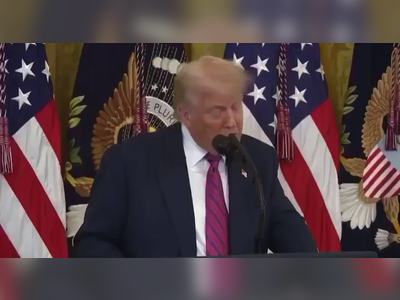Support for Eurosceptic parties doubles in two decades across EU
The paradox at the heart of Europe is revealed today in new research that shows that the vote share for Eurosceptic parties has more than doubled in two decades, even though support for the EU remains at record highs.
The sharp increase in the electoral success of Eurosceptic parties is laid bare in research conducted by academic experts in populism and radicalism across the EU who shared their work with the Guardian.
“European leaders who support the EU integration process can absolutely not afford to sit back and be complacent,” said Matthijs Rooduijn, a political scientist at the University of Amsterdam, one of the PopuList project leaders. “Eurosceptic parties are very much thriving and it is unlikely that this is going to change anytime soon.”
The project defines Euroscepticism as encompassing both a “hard” variant – outright rejection of European political and economic integration, and fierce opposition to remaining in the EU – and softer, more qualified objections to particular aspects of the European project.
The publication of the research comes five weeks after Britain became the first country to voluntarily withdraw from the EU, and it coincides with a Guardian editorial commitment to deepen its coverage of Europe.
The research shows that since 1992, the first year in which there were free and fair elections in every country now a member of the EU, combined support for European far-right, far-left and other Eurosceptic parties has surged from 15% to almost 35%.
After more or less flatlining for more than a decade, support for Euroscepticism - which began to emerge as a fringe electoral theme for European far-right parties after the 1992 Maastricht treaty – started climbing rapidly from 2005.
Rooduijn attributes this rise mostly to the sharp Eurosceptic turn taken by Poland’s Law and Justice (PiS) party, which sees itself as a “Christian bulwark”. He notes a similar big increase in 2010 when Hungary’s Fidesz – “the future of Europe”, according to its leader, Viktor Orbán – fully embraced Euroscepticism.
A third jump in support, this time among “other Eurosceptics”, came in 2013, reflecting the emergence of the Five Star Movement (M5S) in Italy. Far-right and far-left Euroscepticism made further gains in 2015 with the growing popularity of Alternative für Deutschland in Germany and Podemos in Spain.
Rooduijn suggested these four distinct waves of increasing Eurosceptic electoral success may additionally be related to the EU’s eastward expansion in 2004 and the 2005 French and Dutch referendums on the proposed EU constitution; the Eurozone crisis of 2010; and the migration crisis of 2015 and the 2016 Brexit referendum.
“This new data shows that the rise of these parties’ electoral successes is steeper than previously thought,” Rooduijn said. “It’s striking because it means that today more than one in every three Europeans votes for a party that is critical of the EU.”
The success of Eurosceptic parties, however, “is only partly due to their actual Euroscepticism”, Rooduijn said. “For almost all of them, the issue of European unification is only of secondary – or even tertiary – importance. Their electoral successes are primarily due to their positions on other issues.”
He cited the example of Eurosceptic far-right parties, which make up about half of all the parties the project classifies as Eurosceptic. “These parties focus first and foremost on the issue of immigration,” Rooduijn said. “So although the EU plays an important role for them and their voters too, it is not their core issue.”
Multiple studies have shown that public opinion of the EU has, on average, become more positive in the last four years, apparently reflecting mounting uncertainties caused by the upheaval of Britain’s Brexit vote and the election in the US of Donald Trump, who has made no secret of his hostility towards the EU.
In a Eurobarometer survey last year by the European parliament, 68% of those polled felt EU countries overall had benefited from being part of the EU, the equal highest level since 1983, while 61% believed their country’s membership of the bloc was a good thing, a figure previously recorded only after the fall of the Berlin Wall in 1989.
A Pew Research Center study last October also reported high general approval ratings and strong feelings that EU membership had been good for respondents’ countries, with satisfaction levels particularly high in central and eastern European nations, and more than 80% in the former communist states of Poland and Lithuania.
At the same time, alarmed by the popular backlash against Brexit, European populist leaders such as France’s Marine Le Pen, Italy’s Matteo Salvini and the Netherlands’ Geert Wilders are no longer demanding Frexit , Italexit or Nexit.
Instead, said Cas Mudde, a populism specialist at the University of Georgia in the US, while most of Europe’s populist radical right parties remain Eurosceptic, they now seek to “reform the EU into a looser, more democratic organisation that returns national sovereignty to member states – although they differ on the nature of the future Europe they want.”
Yet despite the broad increase in public support for the EU in general, and the softer stance of many previously hardline Eurosceptic parties, the latest PopuList project data indicates that “when it comes to actual voting behaviour and parliamentary representation, Euroscepticism is still alive and kicking”, Rooduijn said.
One reason is simply the increased salience of the EU as an issue, he said. “As a result of an accumulation of various EU-related events, such as Brexit and the eurozone and migration crises, focus on the EU has increased over the years. Moreover, it’s likely to remain high on the political agenda.”
The PopuList, an overview of populist, far-right, far-left and Eurosceptic parties in Europe reviewed by 80 country experts, categorises all European parties that have obtained at least 2% of the vote – or parliamentary representation – in at least one national election since 1989. Its updated version is published on Tuesday.













